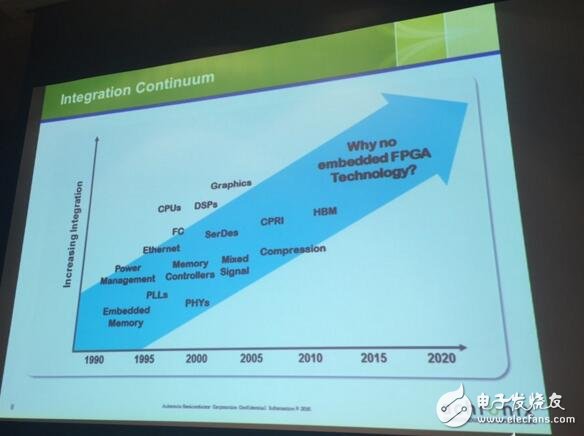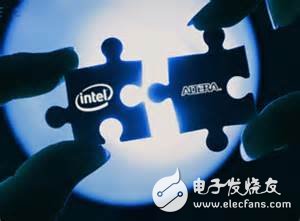Since Xilinx created FPGAs in 1984, this programmable logic device has a place in communications, medical, industrial control, and security for the past few years with performance, time-to-market, cost, stability, and long-term maintenance advantages. There is also a very high growth rate. In the last two years, due to the prosperity of cloud computing, high-performance computing and artificial intelligence, the attention of FPGAs with inherent advantages has reached an unprecedented height. This article starts from the basics to talk about the past, present and future of FPGA.
We know that FPGAs have the advantage of time-to-market and cost over professional ASICs. In addition, in most cases, the FPGA performs some functions more efficiently than the software operations on the CPU. That's why we think it will be used not only in the data center's servers, switches, storage tiers, but also to speed up the entire workflow.
However, we can't be overly optimistic, especially after Intel bought FPGA manufacturer Altera for $16.7 billion in December 2015.

At the end of 2014, Altera's executives, who were still at the time, focused on the future of CPU+FPGA-based data center parallel computing—a market worth about $1 billion at the time. It's not about the $250 million CPU-GPU market in the data center and the $9 billion market that directly uses CPU processors.
The reason Altera made this decision was because they thought the combination had programming simplicity and energy efficiency advantages over the other two. People are very familiar with the CPU and find it not too difficult to find a C programmer. Therefore, for most developers, the continuous use of this solution does not take too much risk when performing computing tasks, but the energy efficiency is relatively low, especially in the case of intensive computing and inherent parallel workloads. under.
As for the CPU+GPU solution, the programmer is not very familiar, but has high efficiency.
According to Altera's estimates, programming a hybrid CPU-FPGA system with OpenCL is easier for programmers than using Nvidia's CUDA environment (some aspects are certainly controversial), but using HDL to hard-program FPGAs is quite difficult. Therefore, OpenCL or other abstraction layer is needed to transfer the load in the CPU to the FPGA.
Intel acquires Altera to change FPGA landscape
The $1 billion data center market is divided by Altera, Xilinx and other FPGA vendors. After Intel acquired Altera in June 2015, the market became more complicated.

In 2014, prior to the acquisition, 16% of Altera's $1.9 billion in revenue came from data center-related computing, networking, and storage businesses, with a total value of $304 million. Those communications and wireless device system manufacturers who have been working in this field for more than a decade or two want higher energy efficiency, lower cost and higher scalability, which are areas that FPGAs are good at. Another point to mention is that when performing these functions, using an FPGA does not require an operating system and corresponding software as if it were a CPU. This portion of revenue accounted for 44% of Altera's revenue, totaling $835 million.
Altera's additional 22% of revenue, or $418 million, comes from industrial control, military equipment and automotive manufacturing. They face the same dilemma, so they choose FPGAs to handle some of their workloads.
In fact, as early as 2014, Intel took a fancy to the potential market for various types of chips worth $115 billion. Among them, editable logic devices (mainly FPGA) account for about 4%, ASICs account for 18%, and the rest are ASSP hodgepods.
In the area of ​​editable logic devices, Intel estimates that Altera has 39% of the $4.8 billion market, Xilinx has 49%, and the remaining vendors account for the remaining 12%.
The reason why Intel did not acquire Altera at the time was because the FPGA business grew almost as fast as its data center group (providing chips, chipsets and motherboards for server, storage and switch manufacturers).
Moreover, Intel did not do this because Moore's law gradually slowed down, bringing a growing competitive threat to FPGAs.
In fact, if you're using an application, install more than one FPGA, GPU, or DSP accelerator in your data center, but you don't need to install multiple Xeon CPUs. Since Intel can't continue to provide more cores and accelerators for Xeons, they came to the conclusion that FPGAs are used as accelerators.
Unless FPGAs can generate $500 million in revenue in the data center, or generate $1 billion or more in a few years. Otherwise, Intel would rather sacrifice two to three times the Xeon revenue, and will not let Xeon's revenue go hand in hand.
Shenzhen Aierbaita Technology Co., Ltd. , https://www.aierbaitavape.com
